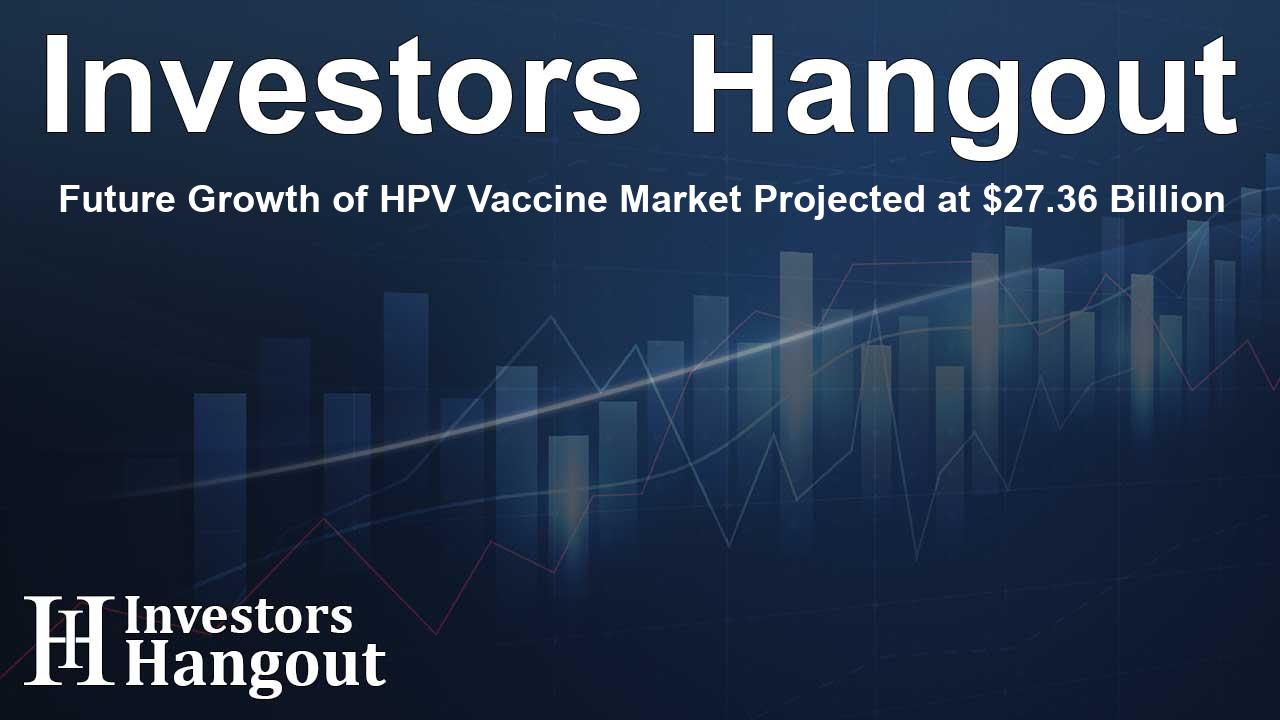Future Growth of HPV Vaccine Market Projected at $27.36 Billion

HPV Vaccine Market Overview
The Human Papillomavirus (HPV) vaccine market is rapidly evolving, with projections suggesting a significant increase in market size from USD 8.14 billion in 2024 to USD 27.36 billion by 2032. This remarkable growth rate translates to a compound annual growth rate (CAGR) of 16.38% during the forecast period. Such an upward trajectory is primarily fueled by rising public awareness regarding the connections between HPV and various cancers, along with increasing support for vaccination programs from governments around the globe.
Market Trends and Drivers
Growing Awareness and Initiatives
As healthcare authorities worldwide emphasize the importance of HPV prevention, the market is experiencing an influx of support. HPV stands out as one of the most prevalent viral infections linked to cervical and several other cancers, making it a significant target for preventive health strategies. Advocacy from major organizations, including the CDC and WHO, has contributed to increasing vaccination rates, particularly among adolescents who are more susceptible to vaccine-preventable diseases.
Innovations and New Formulations
Advancements in vaccine technology are transforming the HPV vaccine landscape. Polyvalent vaccines, which provide protection against multiple HPV strains, are gaining popularity among healthcare providers. Noteworthy examples include Merck’s Gardasil 9, which has set benchmarks for efficacy and safety in preventing HPV-related diseases. This innovation is paired with increasing funding for global immunization efforts, particularly in developing countries, where access to vaccines has historically been limited.
U.S. Market Insights
In the United States, the HPV vaccine market is projected to expand from USD 3.44 billion in 2024 to an anticipated USD 10.96 billion by 2032. Factors contributing to this growth include well-established healthcare infrastructure, government support for immunization mandates, and continuing innovations from industry leaders.
Distribution Channels and Segmentation
Effective Distribution Strategies
In 2024, hospitals and retail pharmacies emerged as the leading distribution channels, accounting for approximately 60% of the market share. Their integration into national immunization programs ensures convenient access for patients. Furthermore, with the rise of telehealth and online services, e-clinics and online pharmacies are becoming increasingly vital, appealing to consumers seeking convenience and accessibility in their healthcare options.
Market Segment Focus
Focusing on types of vaccines, polyvalent options dominate and facilitate a broad level of protection, comprising over 85% of revenue. As for disease indication, the emphasis remains on HPV-related cancers, which has captured about 70% of the market. This aligns with global health strategies that prioritize cancer prevention through vaccination initiatives.
Regional Developments
North America leads in market revenue, benefiting from strong healthcare systems, comprehensive insurance coverage, and effective school-based immunization programs. Meanwhile, the Asia-Pacific region is the fastest-growing segment, with countries like India, China, and Japan ramping up their vaccination efforts and increasing budgets for public health initiatives. India's national cervical cancer vaccination campaign exemplifies the kind of initiative that’s typically supported by government intervention.
Conclusion and Future Outlook
As the HPV vaccine market is poised for expansive growth, continued investment in public health campaigns, innovative vaccine development, and accessibility through various distribution channels will be crucial. The integration of structured public health policies that advocate for HPV immunization will further enhance market dynamics and ultimately lead to significant advancements in cancer prevention efforts worldwide.
Frequently Asked Questions
1. What is the projected size of the HPV vaccine market by 2032?
The HPV vaccine market is projected to reach USD 27.36 billion by 2032.
2. What are the key drivers of market growth?
Main drivers include increasing public awareness of HPV, government support for vaccination programs, and innovations in vaccine formulations.
3. Which regions are seeing the fastest growth in the HPV vaccine market?
The Asia-Pacific region exhibits the fastest growth due to enhanced healthcare systems and governmental initiatives.
4. What types of HPV vaccines are most popular?
Polyvalent HPV vaccines, such as Gardasil 9, are leading the market due to their broad spectrum of protection.
5. How are distribution channels evolving in the HPV vaccine market?
Hospitals and retail pharmacies dominate, but online pharmacies and telehealth services are emerging as significant channels due to consumer demand for convenience.
About The Author
Contact Olivia Taylor privately here. Or send an email with ATTN: Olivia Taylor as the subject to contact@investorshangout.com.
About Investors Hangout
Investors Hangout is a leading online stock forum for financial discussion and learning, offering a wide range of free tools and resources. It draws in traders of all levels, who exchange market knowledge, investigate trading tactics, and keep an eye on industry developments in real time. Featuring financial articles, stock message boards, quotes, charts, company profiles, and live news updates. Through cooperative learning and a wealth of informational resources, it helps users from novices creating their first portfolios to experts honing their techniques. Join Investors Hangout today: https://investorshangout.com/
The content of this article is based on factual, publicly available information and does not represent legal, financial, or investment advice. Investors Hangout does not offer financial advice, and the author is not a licensed financial advisor. Consult a qualified advisor before making any financial or investment decisions based on this article. This article should not be considered advice to purchase, sell, or hold any securities or other investments. If any of the material provided here is inaccurate, please contact us for corrections.
